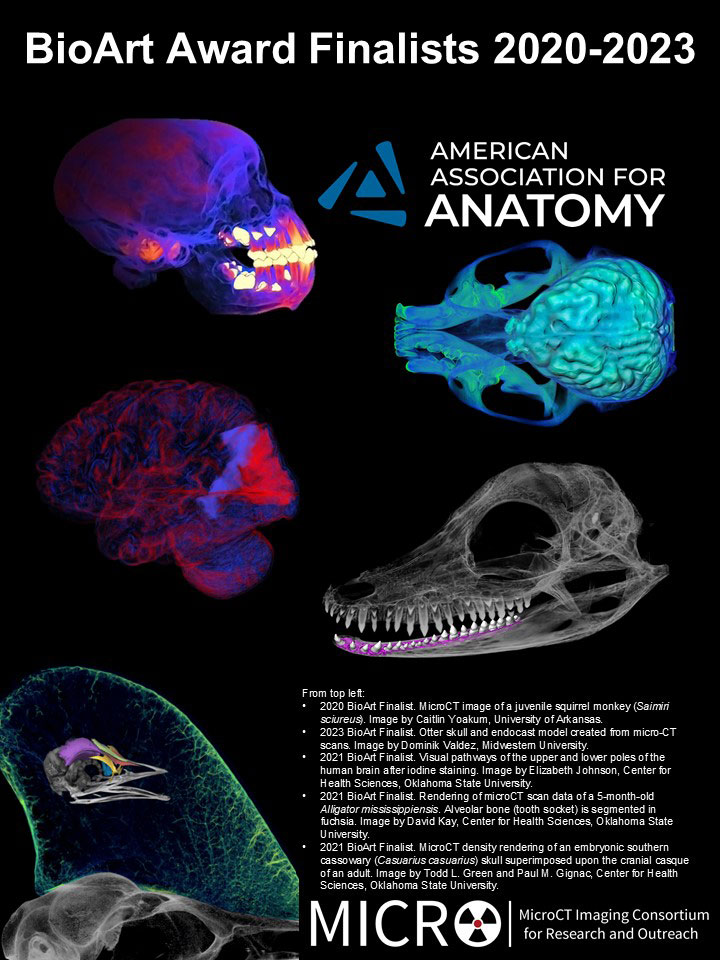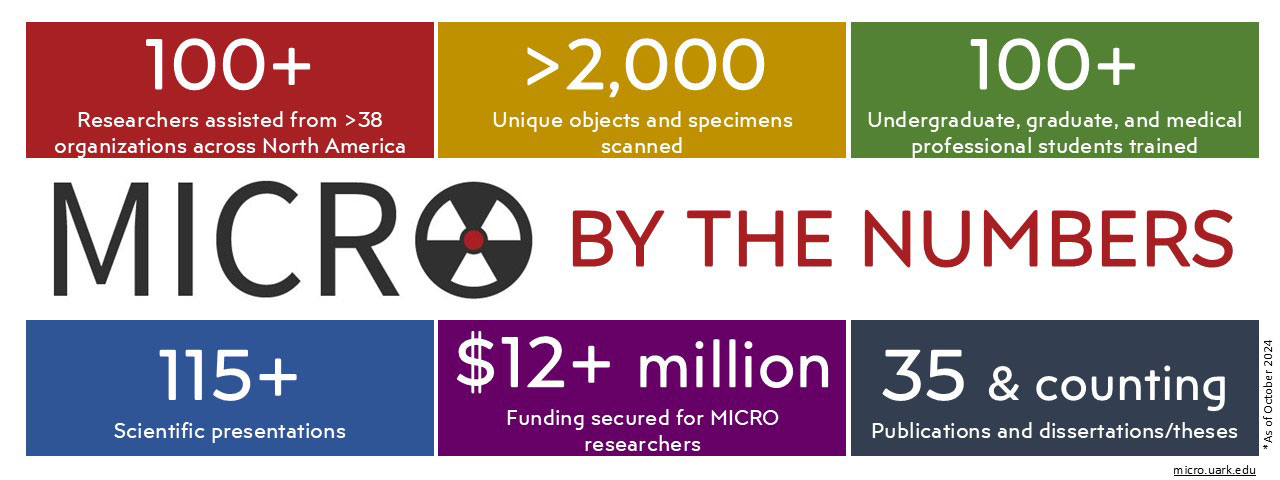
MICRO, the University of Arkansas MicroCT Imaging Consortium for Research and Outreach, was established in 2018 as part of a National Science Foundation's Major Research Instrumentation Grant. The equipment at the heart of MICRO, a Nikon XTH 225 ST X-ray micro-computed tomography (microCT) scanner, allows for the 3D visualization of the inside of objects at resolutions less than the width of a human hair.
This gives researchers the ability to non-destructively document the structure of a range of natural and engineered materials; the fine detail of these visualizations allows for the systematic evaluation of their composition, form, and functional properties—leading to major breakthroughs in the anatomical, biomedical, and engineering sciences, among others.
To date, MICRO has scanned over 2000 unique objects from many different fields, including archaeology (pottery, engraved shells), anthropology and comparative biology (monkey skulls, vole skulls, teeth, turtle heads), geology (sediment, sandstone, geodes), botany (blackberries, pinecones), and mechanical engineering (3D printing, stents).
Since its formation in 2018, MICRO has supported more than 130 researchers from 30-plus institutions, including over 50 U of A faculty and students stemming from 15 departments across the Fulbright College of Arts and Sciences, the College of Engineering, and Bumpers College of Agricultural, Food and Life Sciences.
 Kathleen Paul, assistant professor of anthropology. Photo by University Relations |
 |
As a direct result of this work, MICRO users have been awarded over $12 million in grants; more than $5 million of these funds have been awarded to researchers at the University of Arkansas. MICRO's impact includes over 100 presentations, 25 peer-reviewed publications, support for 13 undergraduate, M.A., or Ph.D. theses/dissertations, and professional training for >100 individuals at various academic levels.
In 2024, MICRO was awarded two Arkansas Biosciences Institute grants to upgrade equipment, which now allows scanning at even finer resolutions. Affiliated researchers in the Department of Anthropology, assistant professor Kathleen Paul and doctoral student Parker Taylor, were both awarded grants from the National Science Foundation for their ongoing research, for which microCT imaging is crucial. Since 2020, MICRO users have also won awards every year for their visualizations in the American Association for Anatomy annual BioArt Competition.
MICRO is managed by the Center for Advanced Spatial Technologies in conjunction with the Department of Anthropology. Claire Terhune, associate professor of anthropology, is the scientific advisor. You can find out more about the MICRO facility and options for imaging by visiting micro.uark.edu or you can email micro@uark.edu to schedule a tour of the facility.
Topics
Contacts
Claire E. Terhune, associate professor
Department of Anthropology
479-575-3529, cterhune@uark.edu
